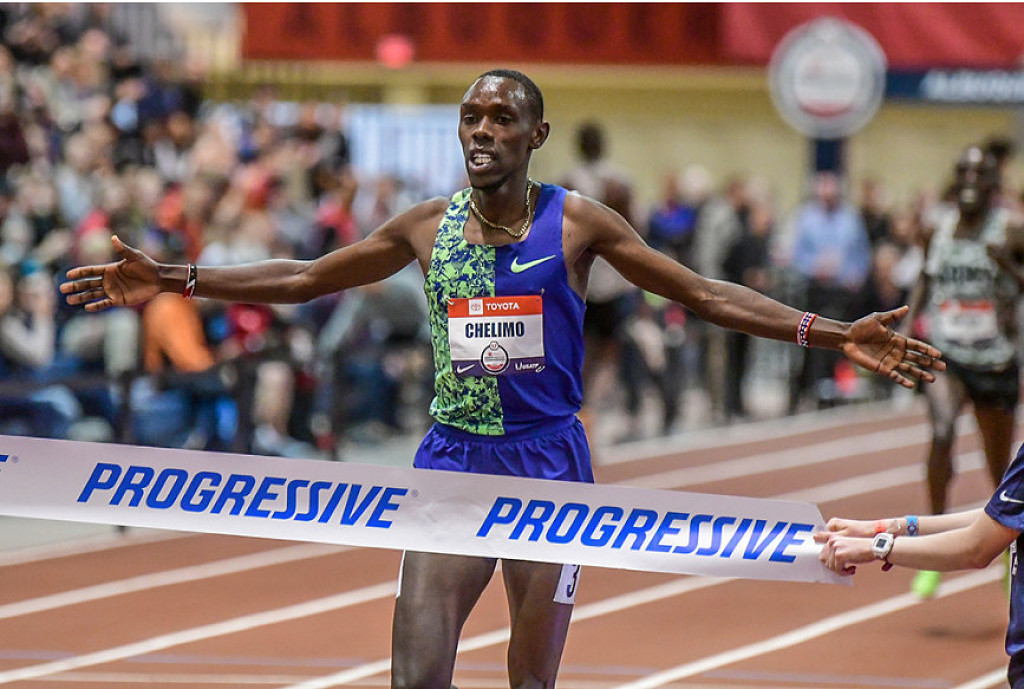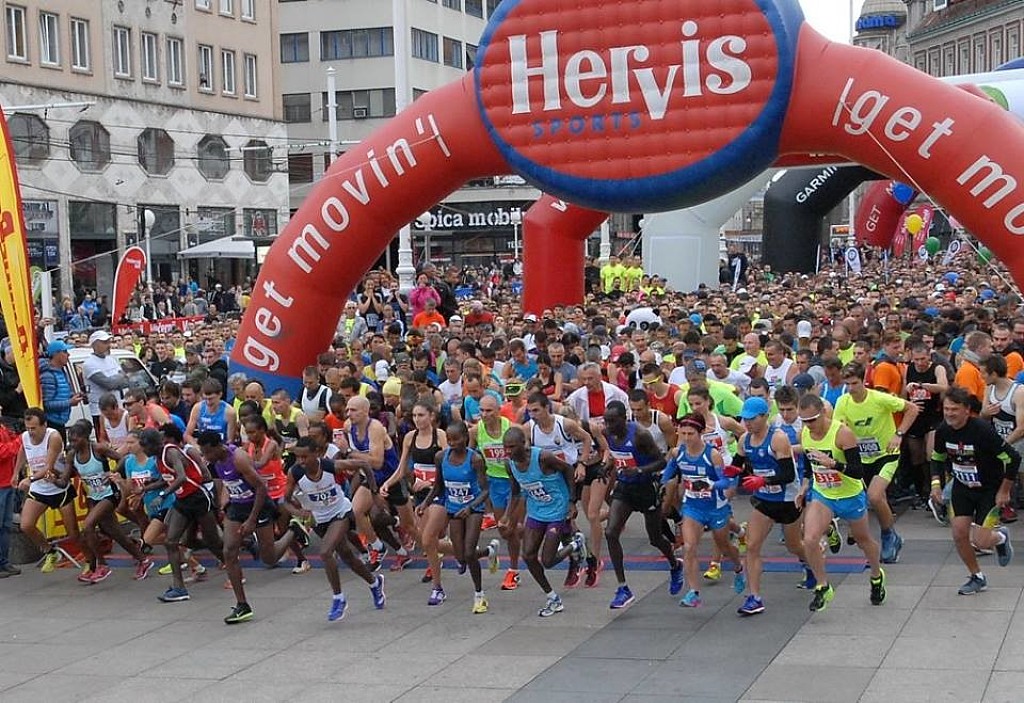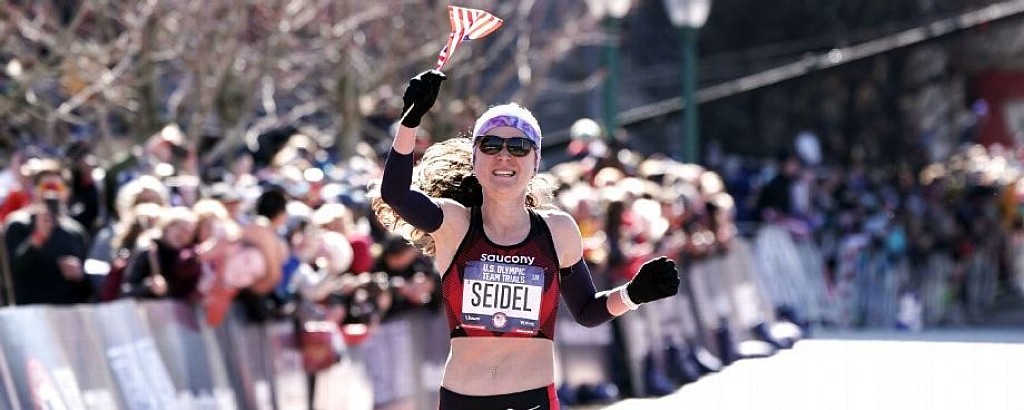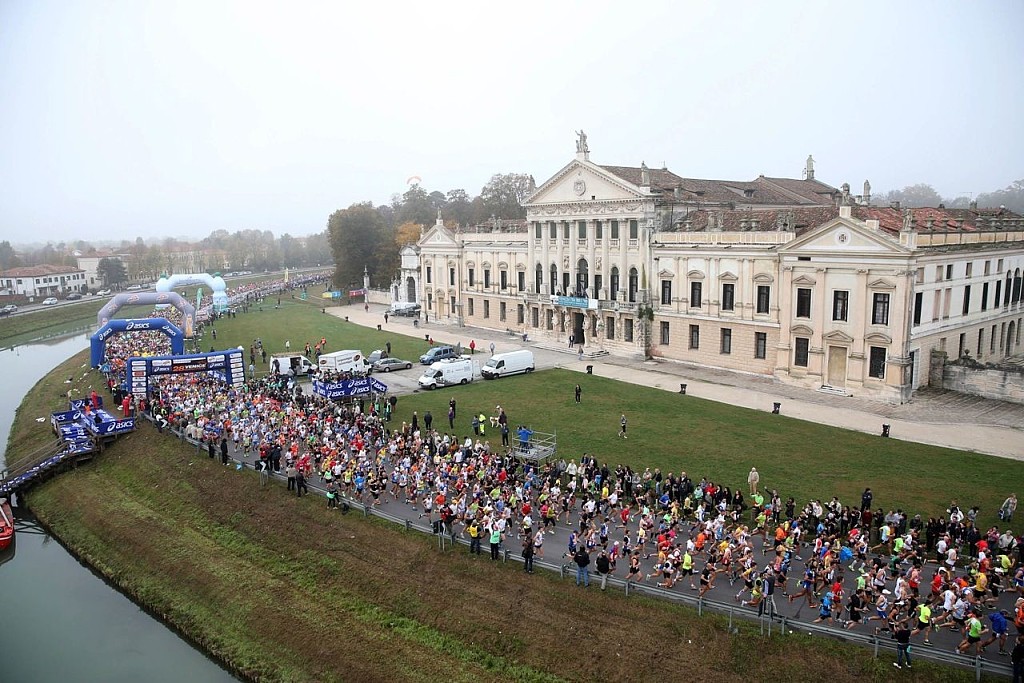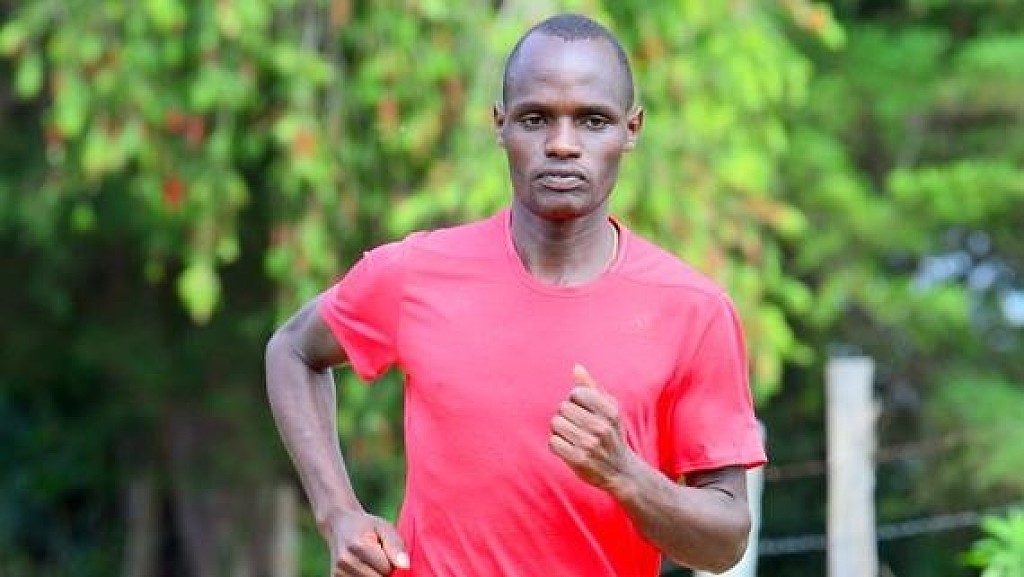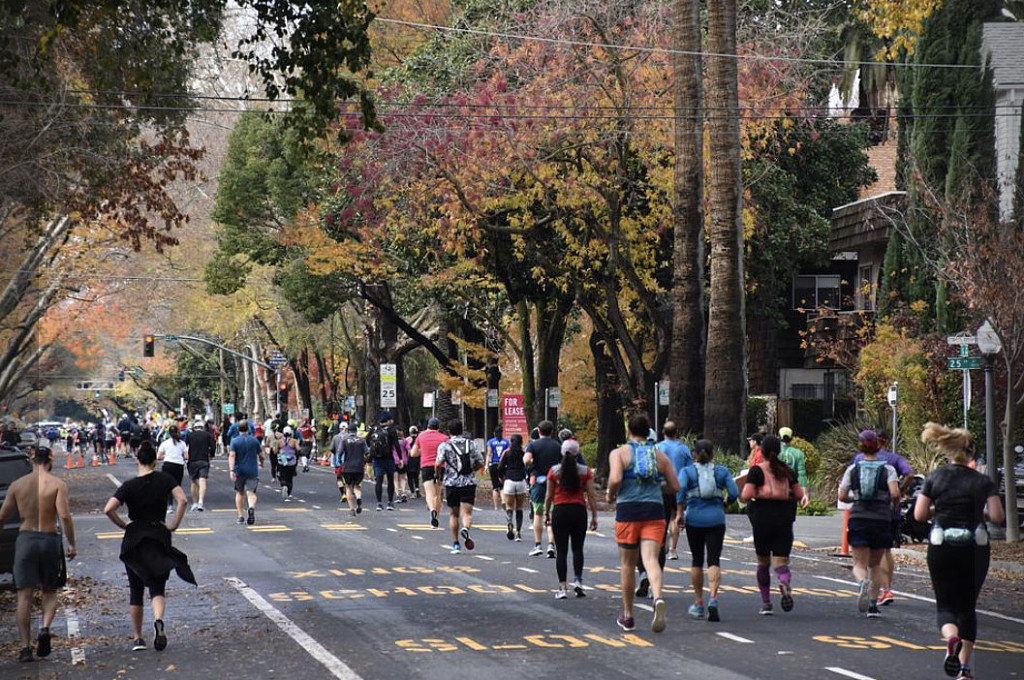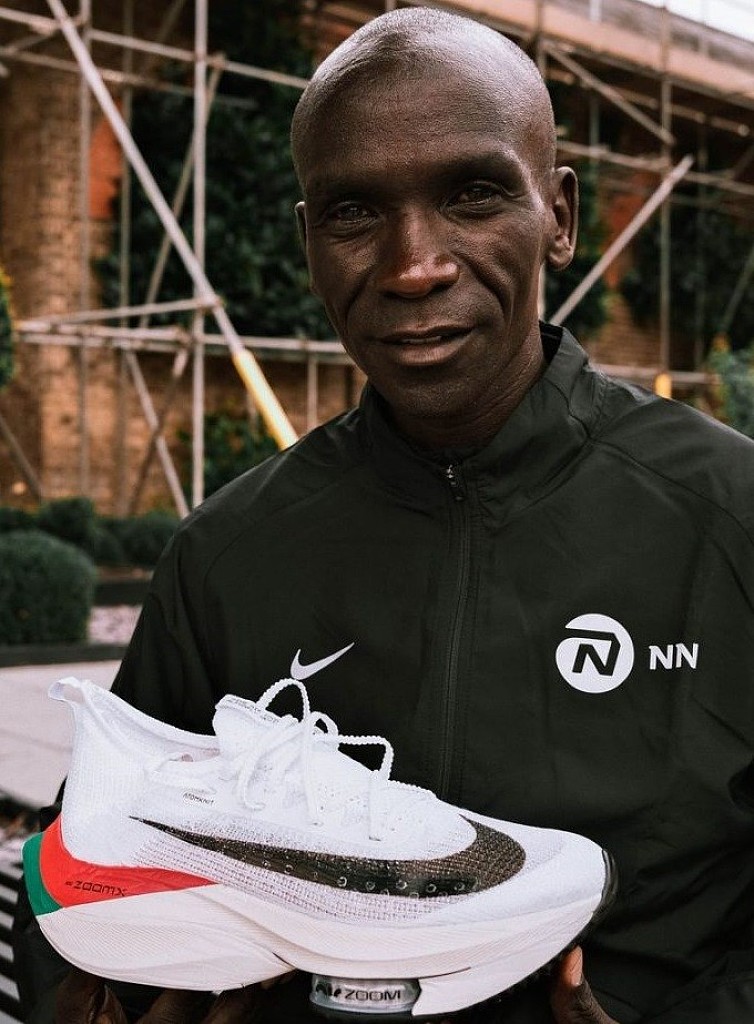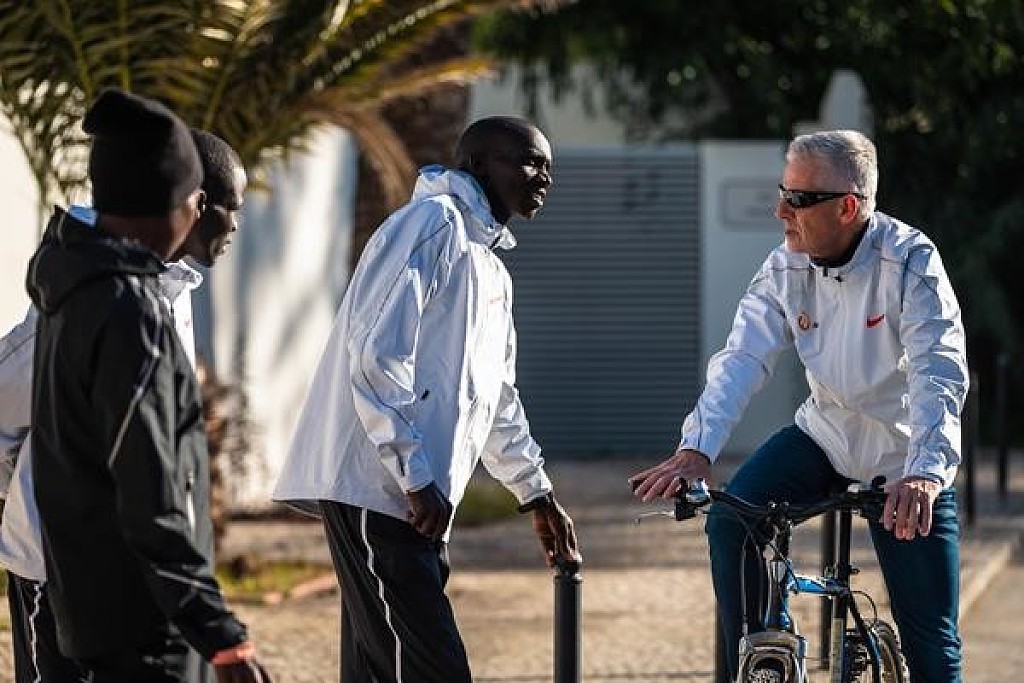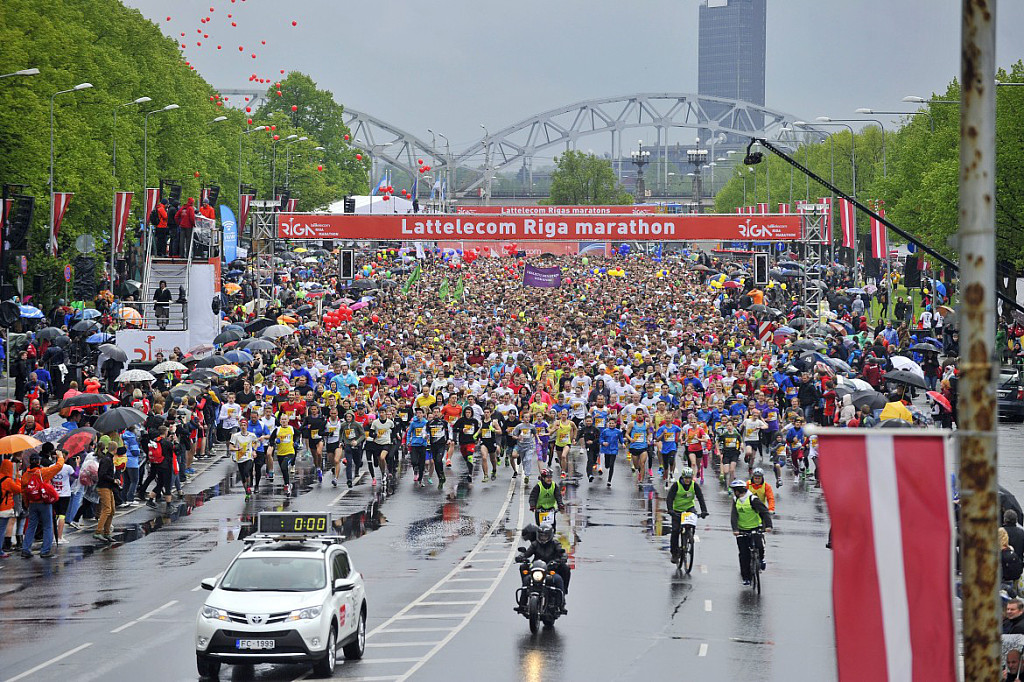Running News Daily
Top Ten Stories of the Week
10/3/2020
These are the top ten stories based on views over the last week.
Paul Chelimo: “Go Hard Or Suffer The Rest Of Your Lifeâ€
THE WILD CARD of the U.S. distance scene? That would be Paul Chelimo. He’s unpredictable on the track: witness his blistering 57-second opening at last year’s USATF 5000, his brutal pace for half the race, then a switch to slowish sit-and-kick tactics for the second half of what turned out to be a runner-up performance.
Chelimo can also be unpredictable—as well as funny—off the track. He had plenty of people going this spring with his social media demonstration of how to use a bathtub as a treadmill.
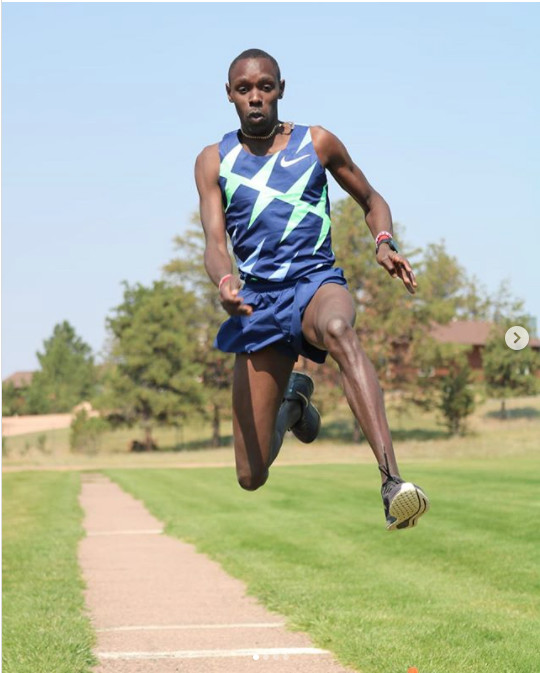
Then there’s his April training account via Twitter: “I drank liquid bleach and went for a tempo run, now I’m seated somewhere on the trail breathing fire… KABOMMMM!!!”
In jest? Of course. Much of the time that’s how the 29-year-old Chelimo operates. But he’s dead serious about where he’s going in this sport. It shows in his oft-repeated mantra: “Go hard or suffer the rest of your life.”
He tells us, “I’m not a perfectionist, but I like being close to perfection in everything I try to do. If I feel like I’m tying up in a workout or in a race, if I don’t go hard, then I’m definitely going to suffer. If I don’t go hard at the Olympics next year, it’s going to be tough for the sponsors to believe in me.”
Still, he has to laugh often, he says, because “I have funny things going on.” He describes one workout that happened the day after he raced at one of Winston-Salem’s Camel City events:
“I went for a long run and it was pouring rain that day, it was crazy. Luckily, I can swim, you know? I ran from the hotel because I missed the shuttle. I was running to where we usually begin our long runs. I got to like, mile 2, and I figured out, ‘Wow, there’s a reason why this year they said they were going with a shuttle.’ It turns out that where we used to cross the water, there was a lot of water, and nothing like a bridge.
“I couldn’t even jump; over the years we used to just jump over the water. And I was like, ‘Man, I’m not going to miss a long run today.’ Because if I decided to go back, that would mean I’m not going to do the long run. And by the side I saw a tree that fell across the water. And I figured I can just jump on this tree and cross. Trust me, it wasn’t a good idea.
“The next thing I saw was just red—it was dirty water. I fell in the water. My whole body. It’s a good thing I can swim. It was like 10-feet deep. I had headphones on and long-run gear and I was drowned, I was drained. I just crossed through and kept going. I met the guys and they were like, ‘How did you get here? Why are you sweating like this?’ I told them what happened and they started laughing at me. They were like, ‘Man, you’re crazy!’ When I am running, there’s a lot of stories happening.”
Chelimo always has been an interesting story himself. He came to the U.S. from Kenya 10 years ago as a recruit for NAIA school Shorter in Arkansas. After winning several national titles, he transferred to UNC Greensboro, where he was twice a runner-up in the NCAA 5000.
In ’14 he entered the Army’s World Class Athletic Program where he found an accelerated path to U.S. citizenship and started to emerge as world class. Two years later his 3rd in the Trials 5000 led to his impressive silver medal performance in Rio, with a then-PR 13:03.90. He landed on the podium again at the London Worlds with his bronze. In ’18, he ran his lifetime best 12:57.55, a mark that makes him the No. 4 American ever.
Last season, however, he didn’t run as well as he had hoped. No longer in the Army, he was competing for Nike but still working with WCAP coach Scott Simmons.
“It was a different thing,” he says, noting that the biggest change came when his wife, Brenda, gave birth to their daughter, Arianna, at the end of ’18. “She has to eat, she has to dress well, she has to get some nice stories, she has to go to school. I had to step up and properly care for my daughter.”
Arianna makes her appearance in the interview, running to her father but tumbling en route and erupting in tears. “She fell down, but she’s OK,” assures Chelimo. “When she sees me, every time she wants all the attention.” He adds, “But definitely, I was able to pick up fitness as the season went by.”
That led him to Doha, where everything went perfectly in the 5000 final, until it didn’t. “I really don’t know what happened to me,” he explains. “When we got to 400 to go, I felt like, ‘Yeah, I think I’ve got the gold this time.’ And just after that, at 300 to go, my legs started tying up; 200 to go I’m in 3rd place and I can’t even move anymore. I mean, [normally] no one can match me in the last 200m.”
Instead, he struggled to 7th in 13:04.60, more than 3 seconds away from a podium spot. “It told me I have an issue with strength,” he says. “If it gets to the point where my legs just give up, it’s time to do it a different way.” So he and Simmons revamped his training to focus on that deficit.
With almost no races this season—2 XC meets in January, 2 indoor affairs in February—Chelimo got frustrated at first, tweeting in May, “Someone find me a race before I lose my mind.” He included a photo of plants growing in his spikes.
“It got to a point.” He acknowledges the frustration, but says he got past it: “I just made up my mind. It doesn’t do any good stressing about racing. The only thing is to stay positive. When you panic, bad things happen. When I stay consistent, that’s the best thing. And trust me, I never, never go to the starting line unless I am really ready to run a race.”
His only “competition” of 2020 after winning the USATF Indoor 3000 was, yes, a triathlon of sorts, where he and his training partners battled in the long jump, shot and discus. For the record, he probably won’t be lured away from the distances after hitting PRs of 13-9½ (4.20) for the long jump, 23-8¾ (7.23) for the shot and 55-9¼ (17.00) for the discus.
He explains that the impromptu field event competition followed a 20M (32K) long run at 9500ft (2895m) of altitude. “I’m a very competitive guy. It was good for me mentally. At first I thought it was going to be easy. When you’re on the runway, you think you’re going to jump really far, but then once you’re in the air, you start worrying about getting injured and breaking your leg.”
He says that if ’21 goes according to plan, he hopes to hit the Olympic 10K standard of 27:28.00 in the early season and tackle both of the long track races at the OT: “I’ll definitely double. The 5K comes first, which is perfect for me, because the 10K is not my main goal.”
Recall that in May ’19 he ran his first 10,000 in 8 years, scoring a PR 27:43.89 in Stockholm. That came two months after his debut half-marathon (62:19) in New York.
“At this point, I’m trying to move up in distance,” he says. “A few years down the line, I might be dropping into marathons, that is my big goal. I mean, in 2028 in LA, I’m going to be in the marathon hopefully.”
Chelimo sums up his career ambition by saying that for him, medals mean much more than records. “I feel like I was built for championship races. I have a tough mentality. It wouldn’t do me any good to break the American Record and not medal at the Olympics. My big goal is I want to peak really well for the Olympic Games. I don’t want to get distracted.
“I want to be smart and I want to be patient.”
(09/27/20) Views: 83
Track and Field News
How to train safety for marathon season during the pandemic
With less access to gyms and people sitting for longer stretches as they work from home, many runners are experiencing more aches and pains than usual, says Jordan Metzl, a sports medicine physician at the Hospital for Special Surgery in New York.
Here, experts weigh in on how to stay motivated and get across the virtual finish line injury free:

Create a support network.

Remember, you won’t have water stations every mile and frequent aid stations like you would during a live marathon. “You should map out your course and leave supplies like water bottles, energy chews and Vaseline at different points,” says Cristina Martello, a physical therapist and running-analysis specialist at SPEAR Physical Therapy in New York City. She also suggests stashing extra masks with supplies. “Most sportswear companies make masks that are less constrictive, more breathable and they can stand up to the condensation from heavy breathing,” she says.
Aaron Mares, associate medical director for the Pittsburgh Marathon, emphasizes the importance of sharing your route with someone or using a buddy system while still following local and state social distancing guidelines.
Use the virtual format to your advantage.
Most marathons require runners to rise before dawn to arrive at the starting line, which can be tough if you aren’t a morning person, notes Chad Asplund, professor of family medicine and orthopedics within the sports medicine division at the Mayo Clinic in Minneapolis. “One positive of the virtual format is that you can choose a time that works best for you,” he says. “Having a window of days also gives you more flexibility with weather. If it’s raining or really hot the day you planned to run, there’s no penalty for postponing.” Dr. Asplund also points out that many traditional marathons ban headphones, so while there won’t be crowds, at least runners can listen to their favorite playlist.
Listen to your body more than your training program.
Most typical marathon-training plans are 16 to 20 weeks. If you’re struggling with 6 miles and your plan has you jumping to 15, consider scaling back, Dr. Mares says. “A lot of us are out of our normal routines and deconditioned,” he says. “Don’t beat yourself up if you feel sore at Mile 8 of a 12-mile run when in past years you normally wouldn’t have problems.”
Brett Toresdahl, research director for the Hospital for Special Surgery Primary Care Sports Medicine Service in New York, says in general that soreness that goes away with warming up and within the first mile of a run is OK. “If there is pain that gets worse throughout the course of a run and causes a runner to limp or change how they run, that should be seen by a sports medicine specialist,” he says. Many physical-therapy clinics are open or offering telemedicine.
Don’t neglect cross-training.
“The biggest mistake people make is thinking as long as they get their long runs in they’ll be able to get through 26 miles,” Ms. Martello says. “Half the battle is doing shorter runs and cross-training.”
Dr. Asplund says if you’re short on time, it’s better to skip an easy run day and focus on strength. “Runners are great at going straight ahead,” he says. “Injuries arise when the gluteus medius and external hip rotators are weak. These are the muscles that stabilize the pelvis.” Try this workout to build hip stability.
Embrace recovery days.
Runner’s bodies tend to break down two to four weeks before race day, Ms. Martello says. Typical overuse aches and injuries include shin splints, patellofemoral pain (also known as runner’s knee) and Achilles and hip flexor tendinitis, she says. “The best way to prevent these aches from sneaking up on you is to put a lot of stress on recovery days,” she says. Recovery days should include icing, self-massage, like foam rolling, and mobility work and stretching. And if you’re feeling pain, take a day off, she says.
Take your taper weeks seriously.
Some people find it challenging to cut back after working up to big miles. But the marathon taper, a gradual decline in mileage that typically starts two weeks before the event, prepares the body to be at its peak on race day, Ms. Martello says. “This isn’t the time to sneak in miles you missed or bang out heavy squats,” she says. She suggests combining short runs with dynamic warm-up exercises such as monster walks and walking knee hugs to help keep the muscles fluid.
(09/29/20) Views: 80Jen Murphy
The 29th Zagreb Marathon officially cancelled due to COVID-19
"After several months of efforts by us to provide all the necessary conditions for the 29th Zagreb Marathon, we would like to inform you that, unfortunately, we have to cancel the races. The Zagreb marathon was supposed to be held on Sunday, October 11, 2020, with a start and finish on Ban Josip Jelacic Square. Still, unfortunately, like all major marathons in the world, this year, it suffered the same fate," said the organizers on their official website.
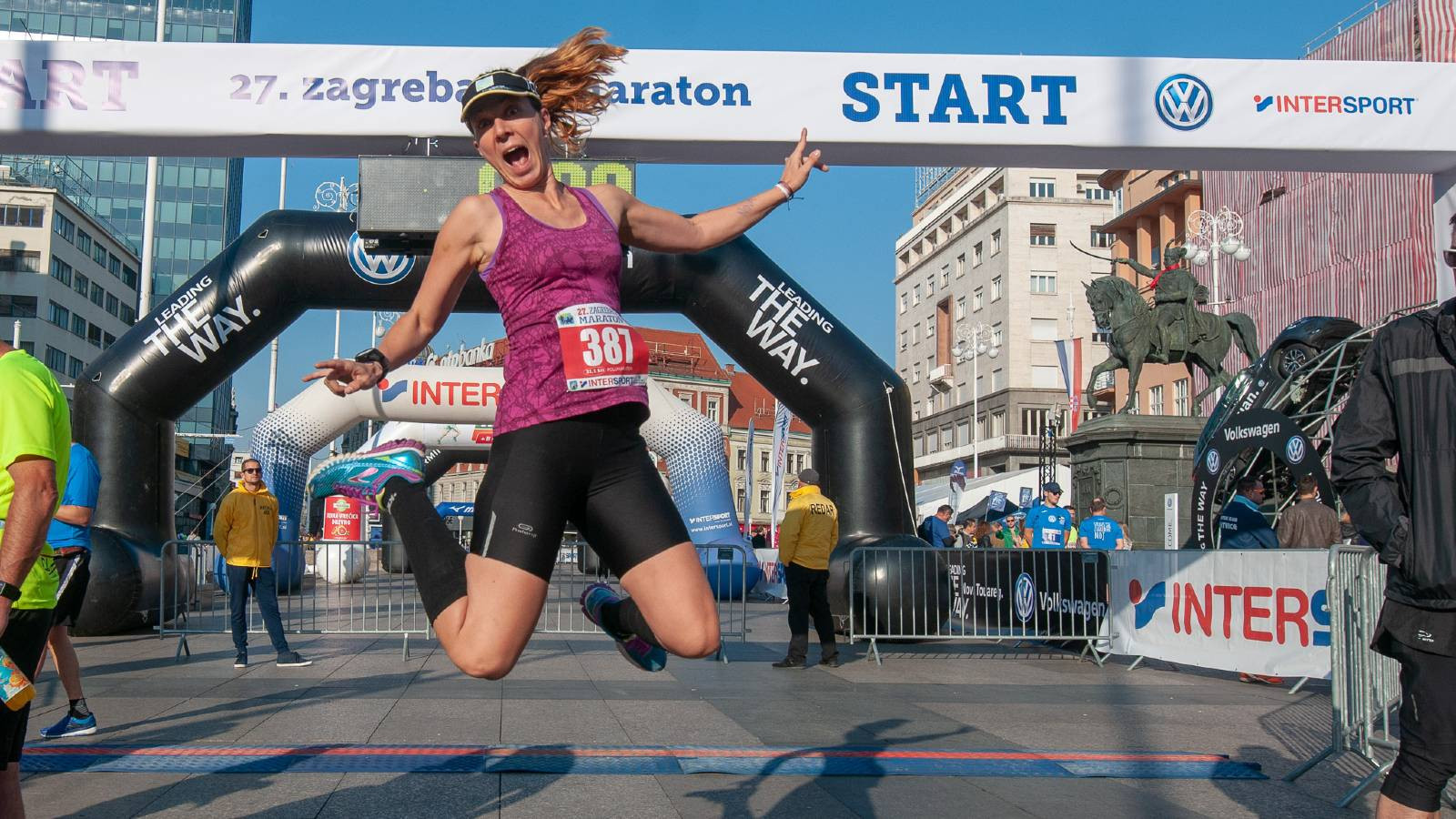
"Precisely because many marathons have been canceled in Europe and the world, many runners wanted to take part in the Zagreb Marathon, which this year also received a Bronze label from World Athletics. As the epidemiological situation in all countries has significantly deteriorated and there are many registered participants from Croatia and the world, we cannot consciously run the risk of endangering the health of our runners and the potential spread of the infection to other fellow citizens. The Zagreb Marathon is a major international sports event, which primarily aims to promote a healthy life, and we certainly want it to stay that way," the statement continued.
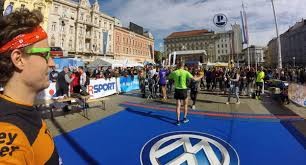
However, to mark October 11 and the day of the marathon in the spirit of running, the organizers announced they would hold virtual races, and preparations are now underway. All information will be published on the Zagreb Marathon website.
"Unfortunately, this year is uncertain and difficult for the organization of all events. As much as we hoped that the races would be possible with all organizational changes and adherence to epidemiological measures in the start zone, unfortunately, there are too many participants for the current epidemiological situation," the organizers concluded and expressed hope "that this year is really an exception and that we will all welcome 29th Zagreb Marathon, October 10, 2021, with joy and satisfaction."
(09/28/20) Views: 69Daniela Rogulj
Molly Seidel has found a way to run again
Molly Seidel ran her first marathon in February at the U.S. Olympic trials in Atlanta -- finishing second and qualifying for the 2020 Tokyo Olympics.
The games have been postponed, but Seidel, 26, continues to train and will compete in her second marathon Oct. 4 with an elite group of runners at the London Marathon. What follows is the story of her journey of recovery from anxiety, depression and disordered eating told in her words.
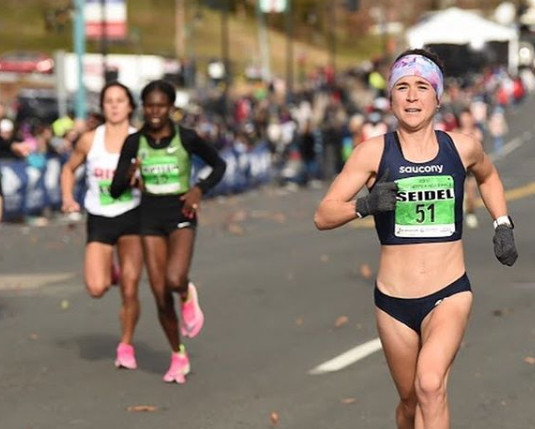
When I crossed the finish line in Atlanta this year, my full, messy story was out there. And, to some degree, the media and people on the outside wanted to put a nice tidy bow on it. They wanted this marathon and the Olympics to be my new story: the next phase of Molly the Runner. But the reality is much messier.
I will never overcome my eating disorder. I still struggle: I relapse and I actively deal with the ups and downs that come with chronic OCD, depression and anxiety. It's not something that a nice tidy bow -- like the Olympic trials or even the Olympics -- can disguise.
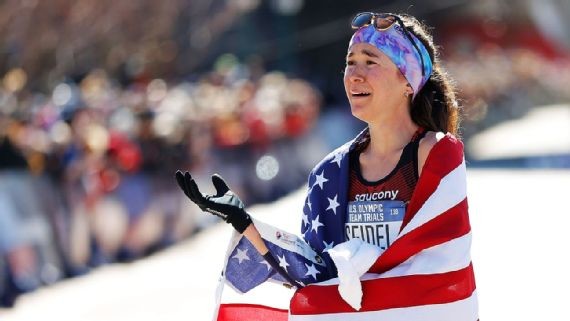
Obviously, there was a sadness to the Olympics being postponed. I would have loved to get to race this summer. But part of my recovery and mental health journey is all about realizing what I can control. And right now, I can't control that the Olympics were postponed. I can, however, control how I view this postponement. Since I'm new to marathons, I'm looking at this postponement year as a big opportunity. I can use the extra time to my advantage and improve every aspect of my training.
Before the trials, I had five months of healthy training. And after the trials, the narrative buzzing around me was, "Molly Seidel's second marathon will be the Tokyo Olympics." Honestly, I didn't want my second race to be the Olympics. This postponement allows me the time to gain more experience, train for an extra year, nail down my nutrition and run another marathon.
Instead of competing in Tokyo this August, I traveled to Flagstaff, Arizona, for altitude training. About eight weeks before the London Marathon in October, I learned I would be one of the elite racers competing overseas. A normal marathon training schedule is closer to 12 weeks, but just like the Olympic postponement, I realized the only thing I could control was utilizing the next two months to prepare.
Beyond my training and marathon builds, I have to make sure that I'm focusing on my mental health over the next year. It's by no means going to be seamless. I know there will be a lot of good times and bad times over this next year. I can't just stay consistent in my training, but I also need to stay consistent in going to therapy and all the nitty-gritty stuff that isn't quite as fun, but I have to maintain.
Today, I would not be the runner I am without my struggles. I would not be the person I am without my struggles.
I don't have to be perfect. The London Marathon won't be perfect. It might not be the greatest race of my life, but it will be a learning experience. And it will bring me one step closer to the Olympics.
Molly Seidel has stopped trying to outrun OCD, depression and anxiety. She has taken control of her story and is preparing for the London Marathon -- and eventually the Tokyo Olympics.
(09/25/20) Views: 65
Charlotte Gibson
Venice Marathon will go forward with just two Runners, one man and one woman
Instead of the usual 5000 runners this year's Venice Marathon will only have two, one man and one woman. Under an initiative announced by race organizers yesterday called "Venicemarathon One for All," one male and one female runner will be chosen at random from the field of 5000 entrants to run the famous course from Villa Pisani Museo Nazionale, through the Piazza San Marco, to the finish at the Giardino della Marinaressa. Because of the pandemic, the remainder of the field must run virtually.
"During this hard time we worked in close and continuous contact with local authorities, health institutions and FIDAL (the Italian Federation of Athletics) to try and organize the event this year as our tradition saw in the past," said marathon president Piero Rosa Salva through a statement. "Unfortunately, the strong concern for an epidemiological situation still in progress, especially abroad, forced us, with great regret but with a necessary sense of responsibility, to recognize the impossibility of managing in health safety the events which involved last year about 30,000 people including athletes, school children, volunteers, police forces and professionals."
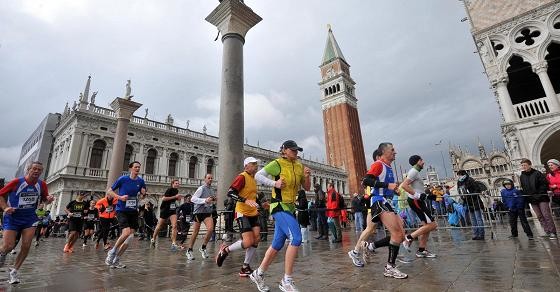
The marathon's 5000 registrants may run virtually, from October 24, to November 1. But the two in-person participants will "have the opportunity to run for all athletes," on the official race day of Sunday, October 25, organizers said. Those runners will have a full escort of vehicles "that will assist them along the race course, guaranteeing their safety," according to the organizers. There will be a live video stream of their run.
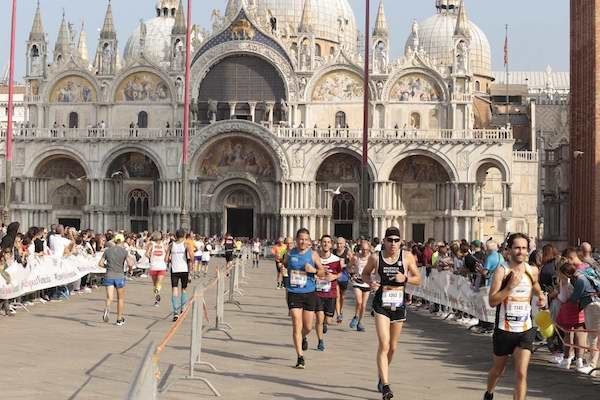
There will also be a start-as-you-please 10-K in the nearby Parco San Giuliano where runners can complete a marked race course anytime between 9:00 a.m. and 6:00 p.m. and get an official time. The park is near the 30-K mark of the marathon course, and 10-K runners can possibly get a glimpse of the two marathoners when they go by.
The Venice Marathon is widely recognized as Italy's best fall marathon. The course records were both set by Kenyans: 2:08:13 by John Komen in 2009 and 2:23:37 by Helena Loshanyang Kirop in 2011. Last year's winners, Tesfaye Ambesa Lencho of Ethiopia and Judith Korir of Kenya, each earned 5000 euros in prize money plus time bonuses.
(09/25/20) Views: 62David Monti
Kenyan runner Patrick Siele banned for fleeing anti-doping staff
Kenyan long-distance runner Patrick Siele has been banned for three-and-a-half years for fleeing from anti-doping officials who were trying to collect a sample, the Athletics Integrity Unit (AIU) said on Thursday.
Siele is the latest in a long line of Kenyan athletes to be sanctioned in recent years, including 2008 Olympic 1,500m champion Asbel Kiprop, former Boston and Chicago Marathon winner Rita Jeptoo and 2016 Olympic marathon champion Jemimah Sumgong.
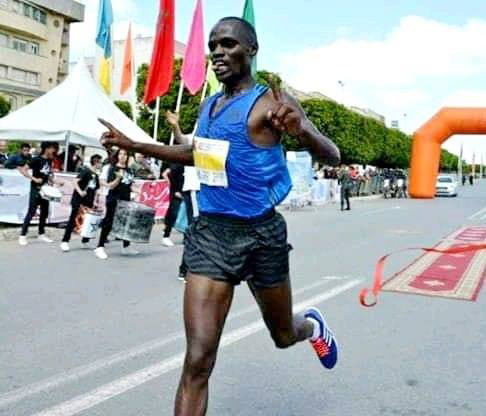
Former 1,500 metres world champion Elijah Manangoi, who is also from Kenya, was provisionally suspended in July for missing three tests under the whereabouts rule.
The AIU global disciplinary body said in a statement that Siele ran away from anti-doping personnel and an independent witness confirmed he "hurdled a fence to escape from the compound" in Kapsabet in west Kenya on Dec. 18 last year.
His sanction has been backdated to March 16, 2020.
Siele's ban was initially set for four years but was reduced by six months after he "promptly admitted the violation".
"The AIU... agreed to a six month reduction in the sanction, taking into account... that this was his first experience of out-of-competition testing and his relative lack of anti-doping education which may have contributed to his error of judgment on the day," the AIU said.
Siele, who clocked 2hr 10 min and 42 sec in the Shanghai Marathon last year, is not one of the world’s elite, but his ban is another embarrassment for Kenya. This brings the total to 66 runners banned now.
(09/25/20) Views: 59Dec. 6th’s 2020 California International Marathon Canceled Due to COVID-19
The 38th annual California International Marathon, organized by the Sacramento Running Association and scheduled to run Sunday, Dec. 6 2020, has been canceled due to health and safety guidelines associated with the COVID-19 pandemic. All 2020 CIM registrants will receive a voucher for free registration into either the 2021, 2022, or 2023 CIM.
“After 37 years of world class production, the CIM has established itself as a Sacramento institution, a valuable civic amenity, and an important cornerstone event on the annual national running scene. Because of this, the CIM cancellation is a devastating blow to the Sacramento region and to the larger running community,” said Sacramento Running Association Executive Director Scott Abbott.
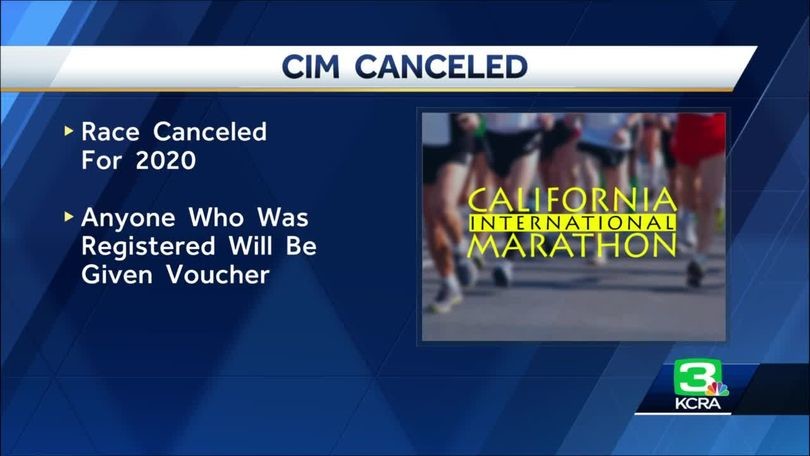
The CIM annually hosts over 15,000 participants, 75,000 spectators, and 4,000 volunteers over the course of marathon weekend, while filling nearly 10,000 hotel room nights and adding an estimated $11 million economic impact to the Sacramento region.
In addition to the impact on local hotels, restaurants and retailers, the event historically raises over $500,000 for local charities and community organizations through leveraged fundraising and direct giving every year.
“Local, regional, and state health officials worked very hard over the past few months to help us find a way for the event to happen, and we appreciate their efforts and their commitment to helping us fulfill our duty to our participants and stakeholders. Ultimately, there were too many uncertain variables in play that prevented our ability to put on this year’s CIM,” added Abbott. “Through this process, however, we are encouraged that we have identified safe policies and protocols for bringing in-person running events back to our community very soon, and we are looking forward to providing leadership in this space for Sacramento.”
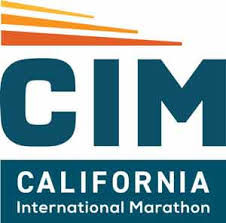
Associated canceled events include November’s Run The Parkway, The Capitol 5k, and UC Davis Children’s Hospital maraFUNrun.
For runners still planning to train for a marathon this fall, the CIM has launched “Project 26.20” a virtual platform with training incentives and a race day virtual experience. More information can be found at runsra.org/project-26-20
The Sacramento Running Association is a non-profit organization dedicated to finding ways to encourage people of all ages and abilities to run. The SRA is committed to developing new, quality running events that appeal to a broad variety of runners.
Other SRA events include the Super Sunday Run, the Credit Union SACTOWN Run, the Gold Country Half, the Capital Cross Challenge, and Youth XC Series.
(09/26/20) Views: 56Eliud Kipchoge has unveiled the shoes he will use for London Marathon this Sunday, inspired by Kenyan flag
Eliud Kipchoge, the world marathon record holder, will be cladding a Kenyan flag-inspired Nike “Alpha fly N% Kenya”, custom made for him for this race.
"The shoes for Sunday's competition. Inspired by colours of the Kenyan flag, representing (the) great people of this beautiful country and to celebrate one year anniversary of the achievement 1:59:40 in marathon distance by EK," Kipchoge posted in his official Facebook page.
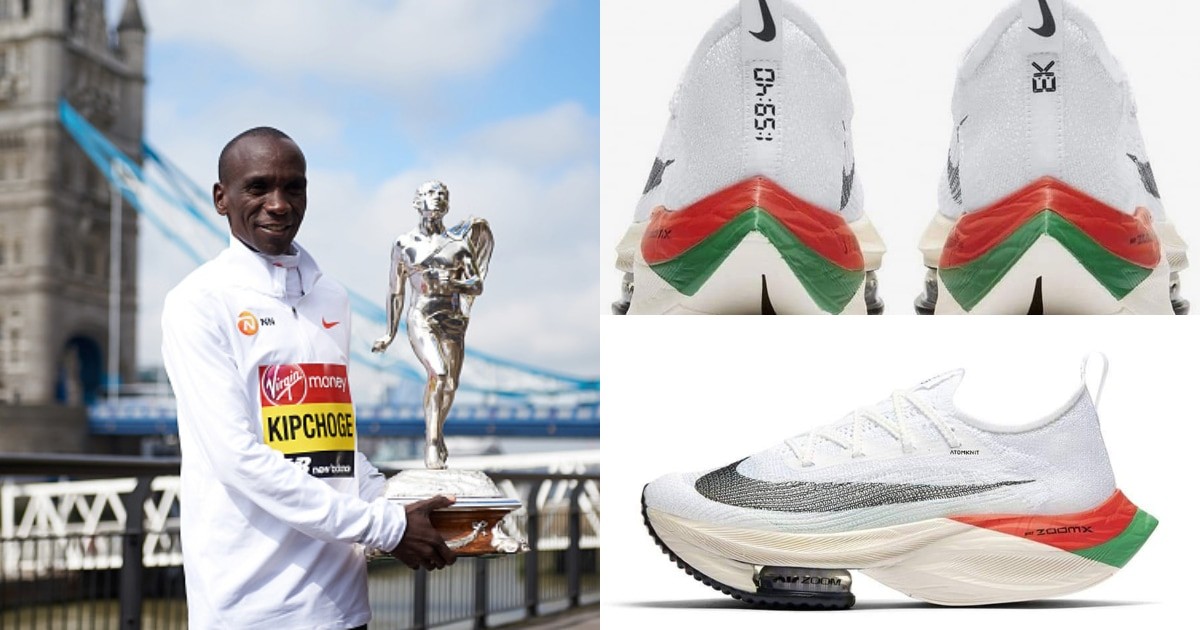
It is an Alpha fly N% shoe, just like the one he used during the Ineos 1:59 Challenge in Vienna last year.
The personal details include a green-and-red colourway – a nod to the national flag of Kenya. The shoes also feature the runner’s initials and 1:59:40 – the time he ran in Vienna.

The Kenyan distance running legend became the first man to run the marathon in under two hours after clocking 1:59:40.2 in Vienna.
This Sunday, Kipchoge comes face-to-face with Ethiopia's distance running great Kenenisa Bekele, who is also the second fastest man in marathon.
There were some complaints after the Ineos 1:59 Challenge with ritics claiming that the shoe had multiple carbon plates and there were calls for it to be banned from competition.
However, Kipchoge and Nike have always insisted that it’s not about the shoes but the person using them.
“The shoes have not been banned hence I am looking forward to another great show on them as I seek my fourth victory on the course,” said Kipchoge during the launch of domestic tourism at the Serena Mara in the Maasai Mara, Narok County in August.
Defending women’s London Marathon champion Brigid Kosgei also used similar shoes when she set the women’s world marathon record in winning the Chicago Marathon in 2:14:04, just a day after Kipchoge’s exploits in Vienna.
Then Bekele would come close to breaking Kipchoge’s world marathon record of 2:01:39 set by Kipchoge in Berlin in 2018 by two seconds when he won in Berlin in 2:01:41 last year.
Nike's Vaporfly range was the talk around the world with the feeling that it gave undue advantage to other runners owing to its sole technology.
However, World Athletics — the global athletics governing body — said it will not ban the shoes but would instead institute tighter regulations around high-tech running shoes.
(10/01/20) Views: 53Ayumba Ayodi
Coach Addy Ruiter on star pupil Cheptegei, he will be the new standard
When Joshua Cheptegei made history to wipe 1.99 seconds from Kenenisa Bekele’s world 5000m record in Monaco in August, it generated an outpouring of ecstasy in a mild-mannered Dutchman situated some 9000 kilometres away in Uganda.
“I’d been following the race by livestream and after he set the record I was leaping around the house, I was very happy,” explains Cheptegei’s coach, Addy Ruiter.
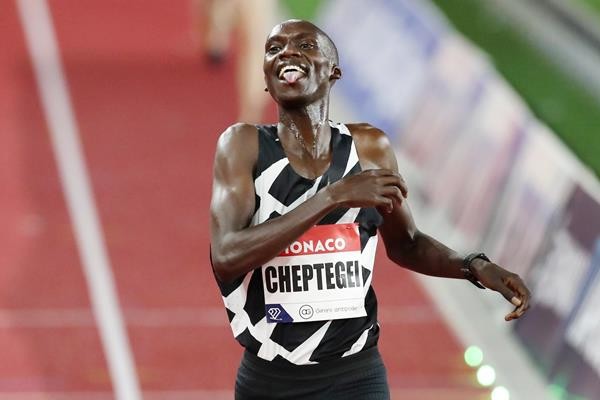
Yet despite the inevitable nerves Ruiter experienced that night, he was also very optimistic.
Some four weeks earlier, Cheptegei completed a track session on a far from standard grass oval track in Kapchorwa which filled his coach with confidence.
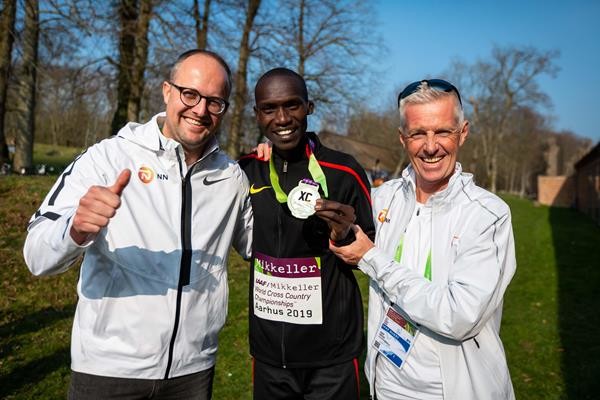
“That day, Joshua showed me he was in 12:30 shape (for the 5000m) and at a much higher level than Bekele’s 12:37 (5000m world record),” he said. “Knowing he was that much further ahead of the world record was important because we knew the likely hot conditions he would face in Monaco would slow him down a little.”
Still aged just 23, the world cross country and 10,000m champion appears armed with all the qualities to become the dominant distance runner of his generation.
After taking down Bekele’s world 5000m record his next target is the Ethiopian’s 15-year-old world 10,000m record of 26:17.53 which he will attack on October 7, in Valencia.
Some ten days later the Ugandan sensation will make his eagerly-awaited debut over the 21.1km distance at the World Athletics Half Marathon Championships Gdynia 2020 in Poland where he will look to claim his first world road title.
‘Coaching was in my blood’
His potential looks limitless, yet behind every great athlete is always a great coach and there is little doubt the avuncular Ruiter ticks all the boxes as a knowledgeable and innovative foil for the super-talented Cheptegei.
Born and raised in the small city of Papendrecht in western Holland, Ruiter was a handy schoolboy athlete but with a curious nature he was quickly drawn to coaching and recalls guiding a number of runners as a high school student.
“Coaching was in my blood,” he says.
Yet running and coaching back then could not dislodge his passion for travel. With an interest in the world around him and a desire to experience different cultures, he would spend periods of time working to save enough money to visit many far flung parts of the world.
He travelled extensively through Asia, spent prolonged periods in Australia and in total has visited 97 countries around the globe.
The Dutchman re-engaged with running for a short period of time around the age of 30. He trained hard and whittled his 10km personal best down to 30 minutes. Then the travel bug took over once again.
“I was someone with a talent but not enough of a talent to train so for a long period of time,” he adds.
On Gdynia: ‘he is capable of winning’
That next target is the world 10,000m record followed by his half marathon debut in Gdynia. There will be huge expectations around Cheptegei, but Ruiter is slightly cautious.
“It was sad they were forced to postpone the original race back in March because we had enjoyed the perfect preparation,” he says.
“In recent months we have been preparing to run the 5000m and 10,000m world records, so this time it has not been a perfect preparation. But even without an ideal build up he is capable of winning the race.”
In the longer term the priority is the track climaxing with the 2024 Paris Olympics, from which point the road and the marathon will be the main priority and of all surfaces, Ruiter believes the road is the one best suited to the Ugandan.
(09/28/20) Views: 51World Athletics
This year 30th annual Rimi Riga Marathon’s will take place physically and in person October 11 with some restrictions
This year, the Rimi Riga Marathon’s 30th anniversary race on October 10-11 will take place in person, while adhering to government restrictions regarding COVID-19.
The restrictions allow us to organize a real race, at the same time placing strict restrictions on all who travel to Latvia from countries with high infection rates.
We have thought about those of you who will be unable to come to Riga this year and take part in the Rimi Riga Marathon in person, but who really want to run, finish and receive a 30th anniversary medal.
In May, we already stated with certainty that the marathon will happen - adapted to the new reality or virtually - and everyone who completes it will receive a unique anniversary medal. This year’s medal designer is Junichi Kawanishi, who also designed the medals for the Tokyo Olympics.
Please follow the instructions to ensure you participation in Rimi Riga Marathon 2020!
Option #1.
Participants who are currently in Latvia and wishing to run in person: please visit your User profile on our website and select DPD Pickup Point to receive your race number and check whether your mobile phone is correct (find settings and choose edit if necessary). To reduce crowding and the risk of COVID-19, the Rimi Riga Marathon EXPO will not happen, and we will send everything necessary using the Rimi Riga Marathon’s official courier, DPD.
Option #2.
Participants arriving from abroad to run in person: please bear in mind that, if your country is on the Covid-19 red or yellow list, you will have to self-isolate for 10 days after entering Latvia and before picking up your race number.
If you still want to take part in the 2020 Rimi Riga Marathon in person (which means that either you are from a country with low infection rates or you are willing to self-isolate for 10 days to take part in the 2020 Rimi Riga Marathon in person).
Option #3.
Participants wishing to run, but unable to come to Riga or self-isolate for 10 days: you can still take part in our VIRTUAL RACE and receive the 30 th anniversary medal by post. All the necessary information about the Virtual race you will find on our website.
If you are not registered yet, and would like to run Rimi Riga Marathon anywhere in the world and receive the official 30th anniversary medal by post, please register now, and we’ll let you know about the next steps. Our virtual platform allows runners to compete anywhere and register the results by the most popular running apps and time-keeping watches.
Option #4.
Participants wishing to postpone their entry until May 15-16, 2021.
We do hope that one of the above options will fit you, and we are looking forward to welcoming you to Riga in October 2020 and May 2021!
(09/29/20) Views: 51

